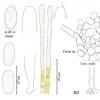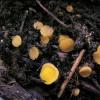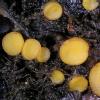
18-12-2025 21:17
Pol DebaenstThe identification took me to Byssonectria deformi

15-12-2025 07:09
 Danny Newman
Danny Newman
indet. Rutstroemiaceae sp. on unk. fallen leavesMc

19-12-2025 10:10
Patrice TANCHAUDBonjour, récolte réalisée en milieu dunaire, a

18-12-2025 17:23
 Bruno Coué
Bruno Coué
Bonjour,je serais heureux d'avoir votre avis sur c

18-12-2025 18:07
Margot en Geert VullingsThese plumes were found on rotten wood.They strong

17-12-2025 18:35
 Michel Hairaud
Michel Hairaud
Bonjour à tous/Hi to everyone I am passing along

15-12-2025 15:48
 Danny Newman
Danny Newman
Melanospora cf. lagenaria on old, rotting, fallen

15-12-2025 15:54
 Johan Boonefaes
Johan Boonefaes
Unknown anamorph found on the ground in coastal sa
I'm searching for documentations (and/or opinions) about collections of Cheilymenia theleboloides which had no visible connection to debris or dung. Do you know literature about such collections on soil or do you have own collections? I'm interested in the differences between Cheilymenia theleboloides on soil, on debris or on dung. In Moravec' monographie I found no answer about this question.
And is it possible that in exsiccata the spores of Cheilymenia theleboloides "lost" the striation of the perispore? Thanx in advance for your help!
Best, Uwe

did you see the remark in B&K that the striation becomes visible when the sample is warmed in KOH? I think they dealt mostly with herbarium specimens. I have no experience with that, but maybe its worth a try.
Cheers
Martin
Non il n'est pas possible que les ascospores perdent les stries avec l'âge. Ce qui est important, c'est d'observer des ascospores dans le BC lactique, surtout si l'on veut contrôler la séparation de la paroi, qui bien sûr se fait à chaud
Je vous présente une photo et mes dessins de C. theleboloides, à partir d'une récolte de 2010, faite en forêt, sur des plantes de jardin en voie de décomposition, plantes qui y avaient été déposées
?René
thanx for your fast replies, your interesting remarks and for your documentation, René!
That helps me a lot!
Best, Uwe



